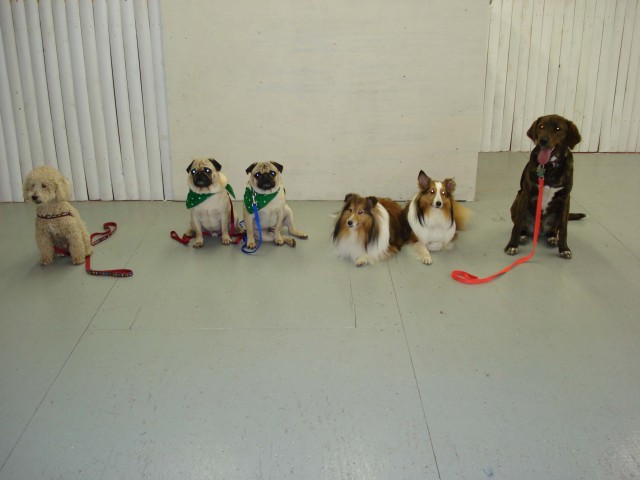QuestionQuestion I hope you can help. We have a rescue that will not stop going to the bathroom in the house and we have a doggie door they can use 24/7. She has gone in every room. It is not one particular room. She just pee'd tonight on a rug she has never pee'd on before in our mudroom. It is difficult to try and adopt her out with this issue. We don't know much about her past but we do know she suffered abuse of some type. She cowers from you at times and does not like loud noises and strangers. She will run and hide if someone comes over. She may start to peek if it is someone that has been at the house before but she won't come up to anyone willingly. I just don't know what to do - I'm very frustrated. We do not yell at her when she goes to the bathroom mainly because I have never caught her in the act. Ideas???
I posted this earlier to Ms Caba but she is on vacation and I routed to another expert. She asked if I the dog uses the doggie door at all. The answer is yes. She will go and come all the time. It's just she will not use the bathroom out there 100% of the time. She will go in the house! More Ideas?
AnswerThe dog may not have been thoroughly house trained, or she may simply not realize that she shouldn't eliminate in THIS house. Some dogs are quite contextual in how they learn. So, the solution is to go back to house training 101. She needs close supervision in the house (tether her to your belt if you have to, or use a crate when you can not watch her directly). Do not scold even if you catch her in the act. Instead, just make an interruptive noise, like "oops", and then ask "outside?" and take her out. Only after she is thoroughly trained to go in the right place should you re-introduce the dog door. I would also grab a copy of "Help for Your Shy Dog" by Deborah Wood, as well as "The Cautious Canine" by Patricia McConnell. If you are going to be fostering a lot of dogs, it helps to have some strategies for the shy ones, and those are good references. In the meantime, don't force her to approach anyone, or allow anyone to move frontally toward her. You can stand with your body to the side (exposing the flank is a signal to her that you are not a threat, and don't consider her one either). Also, don't make direct eye contact, as it is threatening to a fearful dog. Let her come to you, or drop some roast beef or cheese on the floor near enough for her to take it if she wants - make sure your other dogs are not in the area - we wouldn't want a food fight to spoil her confidence-building exercise;-)
You can expect a really shy dog to take a long time to trust. Some are fine in a few weeks, others take months, and some, sadly - never. In any case, do not adopt this dog to anyone with a hustle bustle household - this dog would probably do best with an older owner who has time to devote, and no kids. Most dogs were not abused - this behavior is often a symptom of lack of socialization as a puppy.

 Rajapalayam dogs
Question
Rajapalayam dogs
good morning madam. are rajap
Rajapalayam dogs
Question
Rajapalayam dogs
good morning madam. are rajap
 A doting mother in need of help!
Question
Chewy
In the past year I got a cattle d
A doting mother in need of help!
Question
Chewy
In the past year I got a cattle d
 Male Chesador
QuestionWe have a 8 month old puppy that is more than s
Male Chesador
QuestionWe have a 8 month old puppy that is more than s
 head collar on dogs
Question
head collar on dogs
hello madam, may i know wh
head collar on dogs
Question
head collar on dogs
hello madam, may i know wh
 Housebreaking My Puppy and Choosing the Right Fencing
Question
Woody
Hello. I have a four month old be
Housebreaking My Puppy and Choosing the Right Fencing
Question
Woody
Hello. I have a four month old be